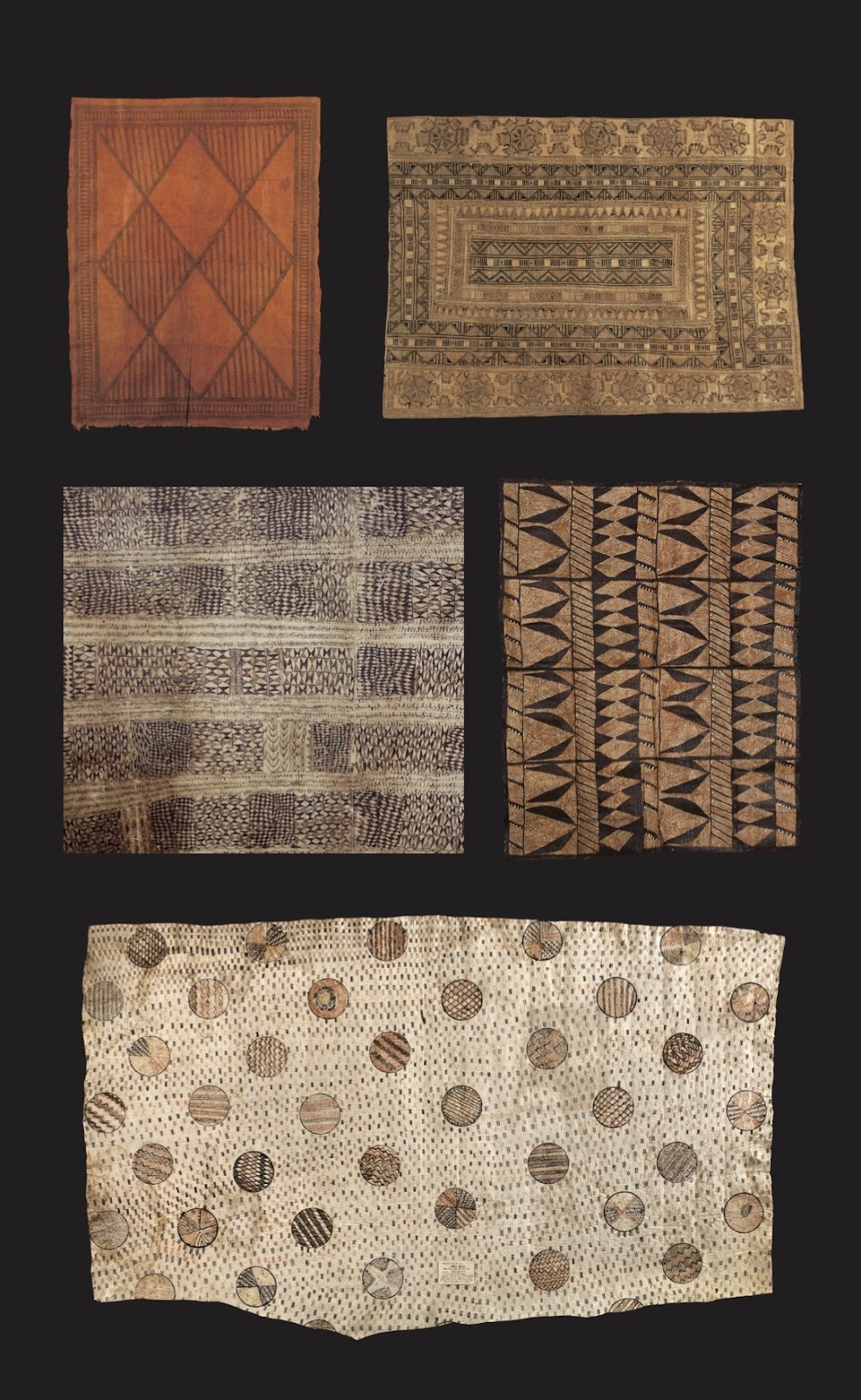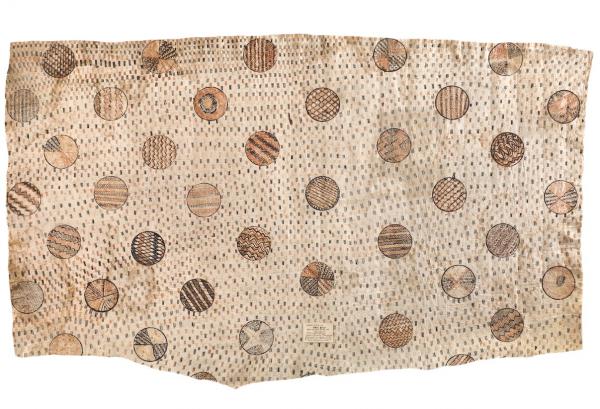Each of these five historic textiles represents the supreme artistry of Pacific makers, working with handmade fiber cloth generally identified as tapa, alternately known as kapa in the Hawaiian Islands. Far from being a simple craft, tapa formed tangible objects necessary for ritual, theater, and spectacle, as well as for everyday use, in many Pacific societies. Tapa in the Pacific Islands is most often produced from the inner bark of the paper mulberry tree, which is soaked, pounded with a beater, and joined or felted into large sheets. The sheets are either kept raw or dyed, scented or stamped, and stenciled or hand-drawn with vegetal pigments. The resulting barkcloth fabric can be used for everyday or exceptional clothing, furniture or bedcovers, room dividers within traditional open architecture, instruments of exchange, elements of political investiture, ritual performances, and funerary shrouds.
The production of barkcloth fabric is an essential indicator for the spread of Austronesian culture from China across the Pacific. While the origin of Austronesian culture has been heavily debated, recent genetic and linguistic studies and archaeological data now trace the origin to the southern China coast, especially the Pearl River Delta area. Stone tapa beaters found in this region have been dated to 7,000 BCE, providing a significant link to the movement of populations from China to Taiwan, Indonesia, the Philippines, and New Guinea. In Polynesia, the history of tapa is linked to the exploration of Austronesian sailors who left Southeast Asia about 4,000 years ago, bringing both the technology and mulberry plants to Fiji, Tonga, Samoa, the Society Islands, Hawaii, Easter Island, and New Zealand.

The earliest work in the proposed group is a small, vivid red Hawaiian kapa panel collected by John Webber, the artist traveling on Captain James Cook’s third voyage to the Pacific (1776–80).
A highly unusual and abstract Hawaiian kapa moe, or bedcover, dating to the early 19th century is painted with 40 circles, each bearing a unique pattern. It was documented as a possession of Queen Ka’ahumanu (1768–1832), the primary wife of King Kamehameha I. Upon his death in 1819, she became the co-regent for a succession of his sons, often serving as the most influential authority within the Hawaiian Islands. Ka’ahumanu gifted this kapa to the American missionary Reverend Hiram Bingham.
A third example from the small island of Niue (barely 100 square miles) illustrates the variety of design and pattern and subtlety of technique found in Polynesian tapa panels. Futuna, an even smaller island, is represented by a barkcloth panel known as siapo. Likely worn as a wraparound garment, siapo from Futuna played a central role in ceremonies of authority and prestige. The fifth textile is an example of smaller pieces of barkcloth from Samoa, also termed siapo, which were historically worn by chiefs and their children to symbolize their rank and status. Background patterns of fine lines were created by rubbing the barkcloth with pigment over a raised design board. This example was collected by Scottish author Robert Louis Stevenson (1850–94) during the last five years of his life when he lived with his family in Samoa.
During our 37th annual Collectors Committee Weekend (April 21–22, 2023), members of LACMA's Collectors Committee generously helped the museum acquire 10 works of art spanning a breadth of eras and cultures. We'll be sharing information about these acquisitions throughout the week here on Unframed.



